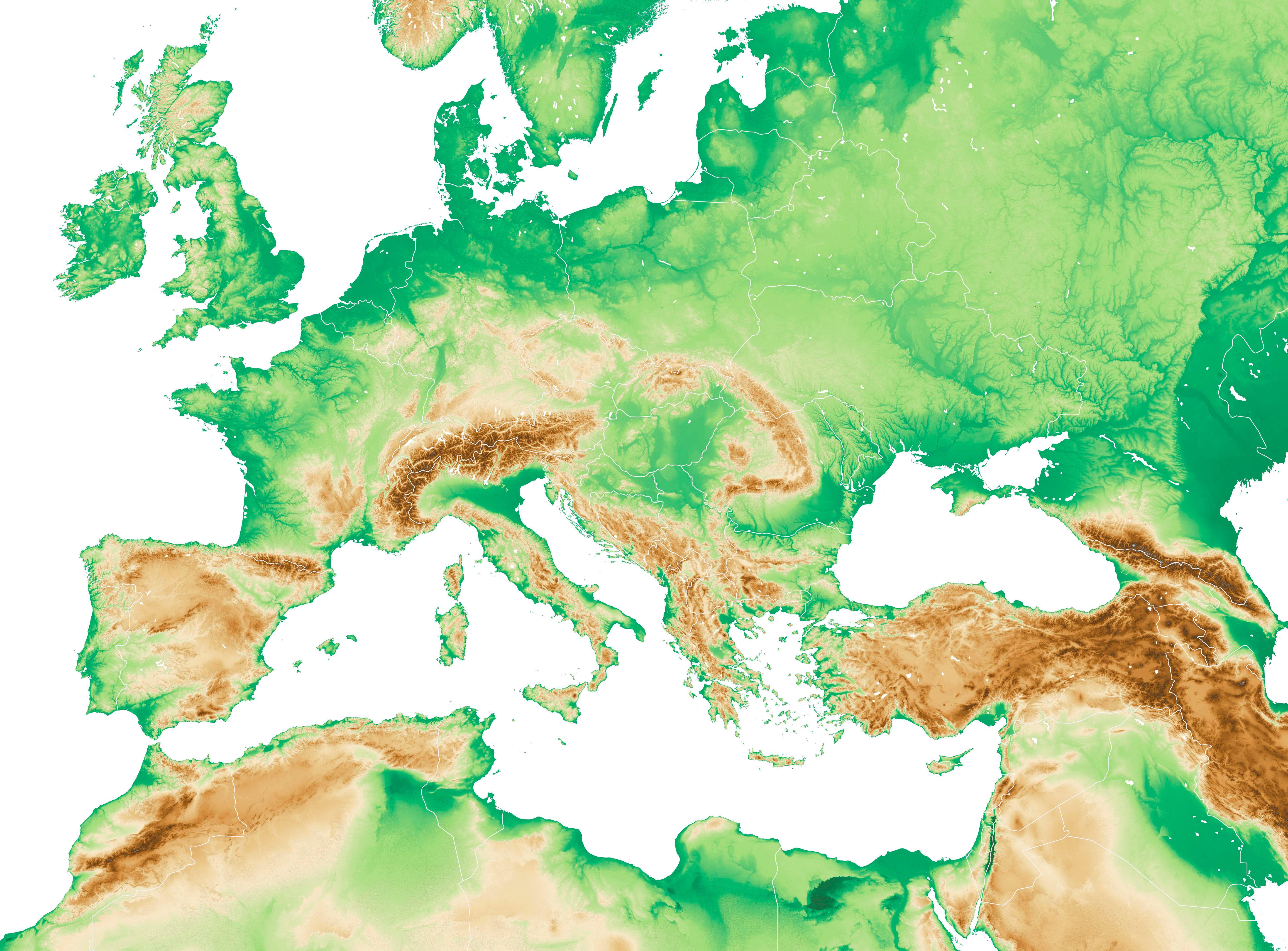Physical Map of Western Europe and the Mediterranean Region


Marcus Rodriguez
Historical Geography Expert
Marcus Rodriguez specializes in historical cartography and geographic data analysis. With a background in both history and geography, he brings unique...
Geographic Analysis
What This Map Shows
The physical map of Western Europe and the Mediterranean region provides a detailed representation of the diverse geographical features that shape this vibrant area. With its mountains, valleys, rivers, and coastlines, this map highlights the natural landscapes that influence both human activity and ecological systems. From the towering peaks of the Alps to the sun-kissed shores of the Mediterranean, the map is a visual testament to the dynamic interplay between geography and culture in one of the world's most historically significant regions.
Deep Dive into Physical Geography
The physical geography of Western Europe and the Mediterranean region is remarkable, characterized by a variety of landforms and climate zones that contribute to its unique environmental tapestry. The Alps, one of the most significant mountain ranges in Europe, act as a natural barrier, influencing weather patterns and serving as a watershed for major rivers such as the Rhine and the Danube. These rivers not only shape the physical landscape but also play critical roles in transportation, trade, and cultural exchange.
Interestingly, the Mediterranean Sea itself is a defining feature of the region, encompassing diverse ecosystems and beaches that attract millions of tourists annually. The sea's warm waters create a Mediterranean climate characterized by hot, dry summers and mild, wet winters, conducive to agriculture and biodiversity. The coastal areas, including parts of Spain, Italy, and Greece, are known for their rich agricultural output, including olives, grapes, and citrus fruits.
Moreover, the geological activity in this region, particularly in areas like Italy and Greece, is noteworthy. The presence of tectonic plates results in earthquakes and volcanic activity, with Mount Etna and Stromboli being famous examples of active volcanoes. These natural phenomena have not only shaped the landscape but have also influenced human settlement patterns throughout history. People have learned to adapt to these challenges, resulting in unique architectural styles and urban planning strategies.
Regional Analysis
When examining the physical characteristics of this region, it's essential to break it down into its distinct areas. In Northern Europe, the rugged terrain of the Scottish Highlands contrasts sharply with the rolling hills of southern England. The Rhine River, flowing through Germany and the Netherlands, serves as a vital waterway, facilitating trade and cultural exchange between countries. In contrast, the Iberian Peninsula, comprising Spain and Portugal, showcases a varied landscape, from the Pyrenees mountains to extensive plains and rugged coastlines.
Moving southward, the Mediterranean Basin is rich in biodiversity. Countries such as Italy and Greece not only benefit from the fertile soil but also face challenges related to climate change, including rising sea levels and increased temperatures. The Balearic Islands off the coast of Spain exemplify the delicate balance between tourism and environmental preservation, as the influx of visitors puts pressure on local ecosystems. Interestingly, the region's history of agriculture and fishing has led to a deep-rooted connection between the people and the land, a relationship that continues to evolve today.
Significance and Impact
Understanding the physical geography of Western Europe and the Mediterranean region is crucial for several reasons. Firstly, it has significant implications for environmental policy and conservation efforts. The region's varied climates and ecosystems are sensitive to climate change, which threatens biodiversity and human livelihoods. Current trends indicate an increase in extreme weather events, affecting agriculture and tourism, two key economic sectors.
Moreover, the interplay of physical geography with human activity highlights the importance of sustainable development. As urbanization continues to rise, cities like Barcelona and Marseille are facing challenges related to overpopulation and pollution. These trends necessitate a reevaluation of urban planning and resource management to ensure that the natural environment is preserved for future generations. Have you noticed how urban areas are increasingly integrating green spaces to combat pollution and enhance quality of life?
In conclusion, the physical map of Western Europe and the Mediterranean region serves as a gateway to understanding the complex relationship between geography and human activity. By examining the diverse landscapes and environmental challenges, we gain insights into how to navigate the future of this culturally rich and ecologically sensitive area. The interplay of natural features and human development continues to shape the story of this remarkable region.
Visualization Details
- Published
- August 11, 2025
- Views
- 116
Comments
Loading comments...